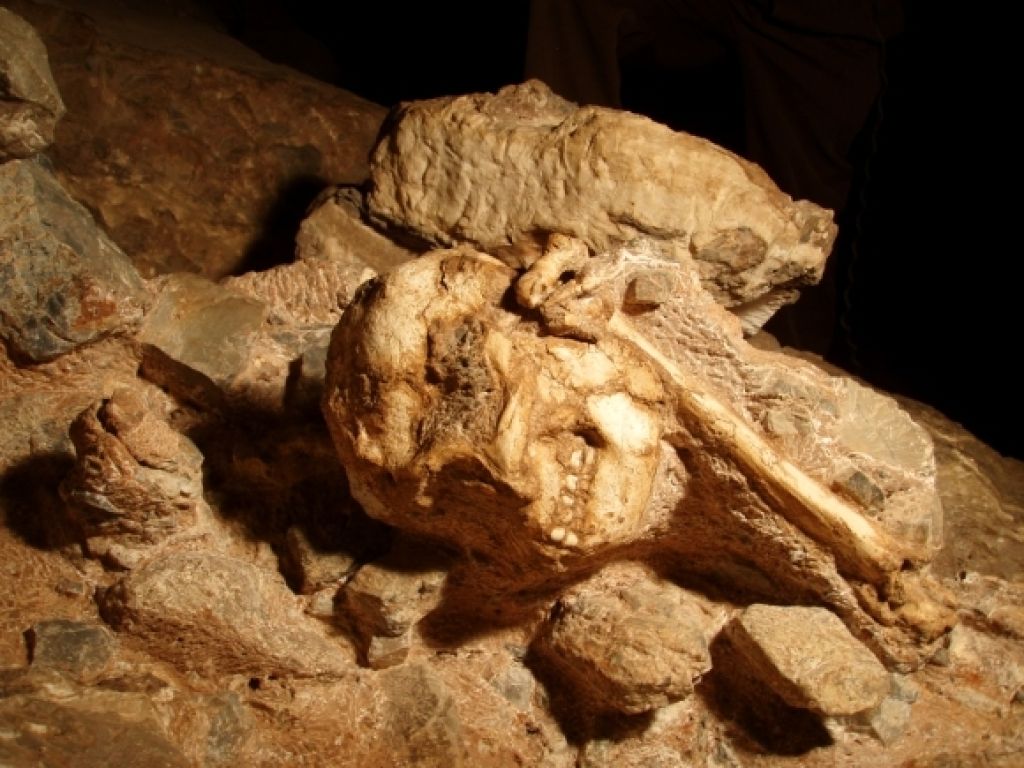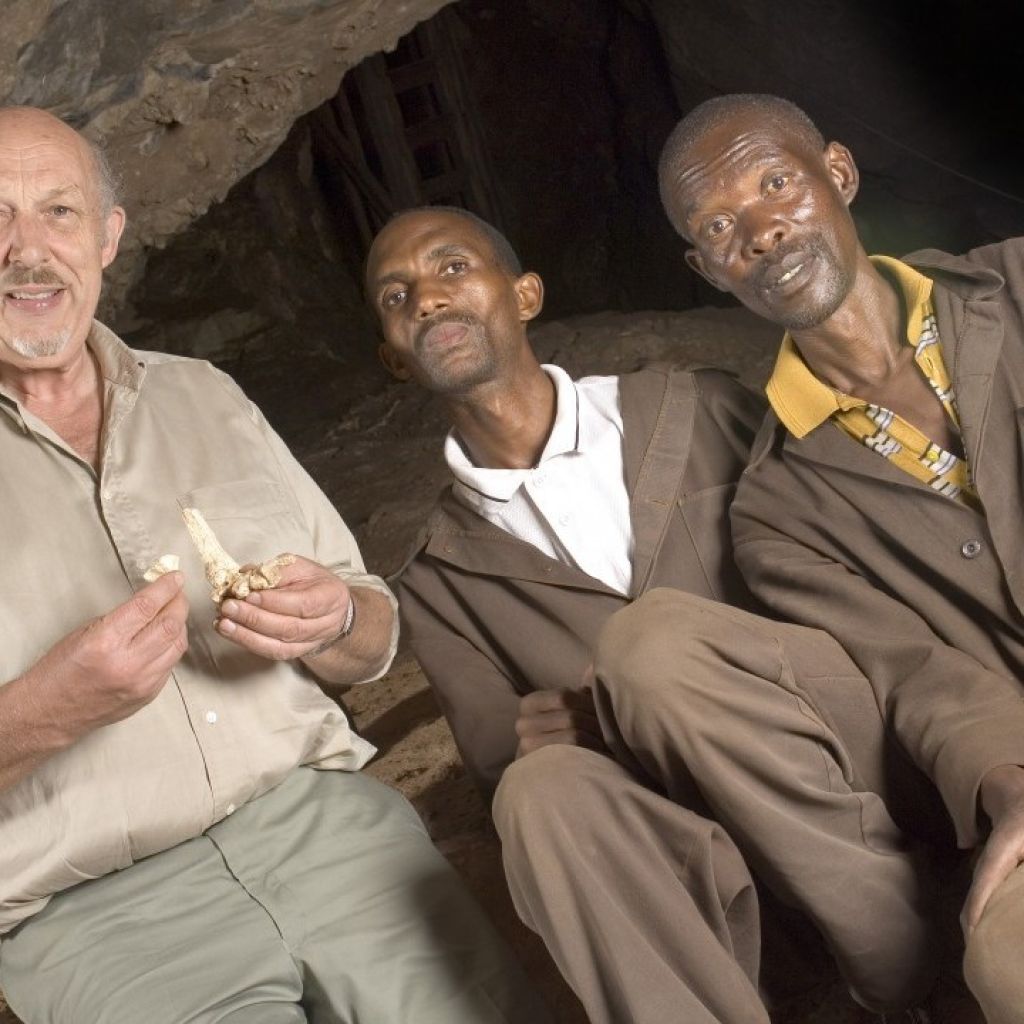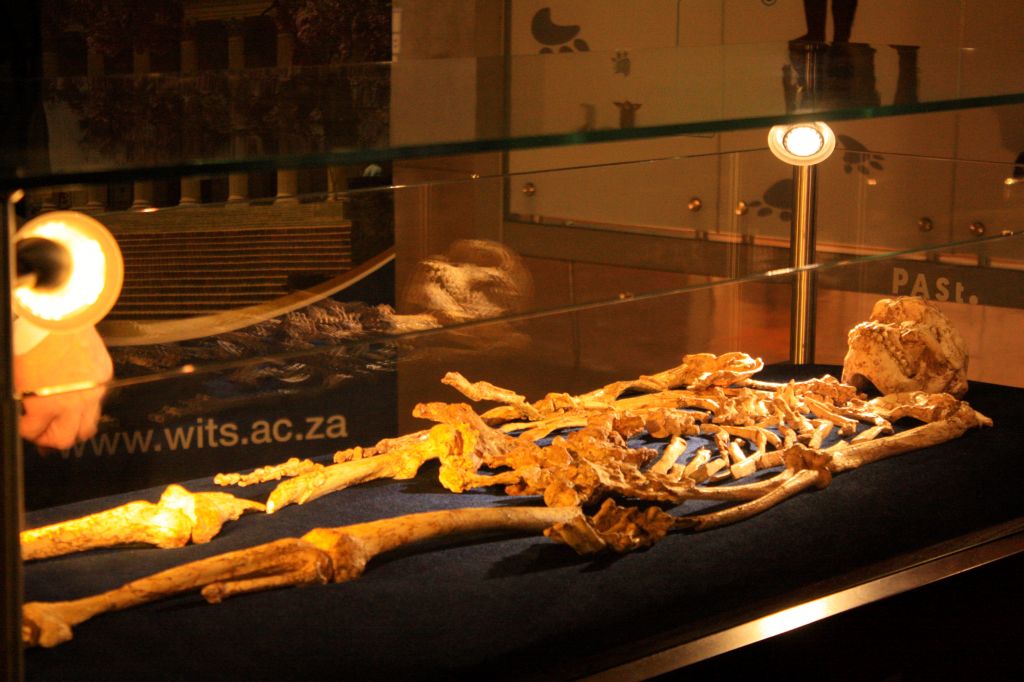“Little Foot”
“Little Foot”, an extraordinary fossilised skeleton of an early form of Australopithecus, is 3.67-million years old, making it the oldest known hominid from the Cradle of Humankind. The finding of Little Foot, deep inside a Sterkfontein cavern, was one of the most remarkable discoveries ever made in the field of palaeoanthropology.
Little Foot, big find

The story of how Little Foot was found, more than 3-million years after she fell into the cave, is almost as remarkable as the skeleton itself.
In 1994, palaeoanthropologist Professor Ron Clarke was in the workroom at Sterkfontein, sorting through a box of animal bones from the Silberberg Grotto in the caves, when he came across four foot bones which he realised belonged to an Australopithecus. The following year, he and esteemed palaeoanthropologist Professor Phillip Tobias, also of the University of the Witwatersrand, announced the discovery of the fossil Stw 573, nicknamed “Little Foot”, consisting of four articulating foot bones. The bones had actually been found in 1980, but had not been recognised.
Then, in 1997, Clarke discovered more bones in a box of monkey fossils, which he realised also belonged to Stw 573. The bones had originally been blasted out by lime miners, and the broken bone from the second leg was among them. Clarke guessed that because there were bones from two feet, the rest of the skeleton could still be in the caves.

He gave his technical assistants, Stephen Motsumi and Nkwane Molefe, a cast of the broken tibia, or shin bone, and asked them to search for the piece from which it had been snapped in the vast and dark Silberberg Grotto – a task akin to finding the proverbial needle in a haystack. Searching with only hand-held lamps, the two men astonishingly found the matching bone after just two days. It was embedded in breccia, deep inside the Silberberg Grotto.
Clarke said he realised there was an australopithecine skeleton lying somewhere in the Sterkfontein Caves when he found the broken bone from the second leg, which lime miners had blasted from the breccia a century before.
Describing the extraordinary discovery, Clarke said:
“When I found the second tibia, that’s when I knew [there was a skeketon]. I realised we had both legs. I didn’t know that we’d find it, but I knew the skeleton must be there and we must look for it. But the chances were almost nil. No-one was more surprised than me when Stephen said, ‘We think we’ve found the bone!’ He seemed low-key, though. The impact of what it meant was like a dream.I said to him ‘am I dreaming?’”
He added: “Alun Hughes [Clarke’s predecessor who excavated Sterkfontein] had a recurrent dream of breaking through into a cavern and finding a complete skeleton. By chance we made his dream a reality.”
It took 15 years of painstaking work to excavate the remains, which have been carefully cleaned and reconstructed.
Who was Little Foot and how did she get into the cave?
Little Foot lived in the Cradle of Humankind sometime between 3.67-million years ago. An early form of Australopithecus, she was smaller than most modern humans, and had a smaller brain. She walked upright but, thanks to her powerful hands and a slightly divergent big toe, was better at climbing than we are. This was important as she probably slept in the safety of trees at night, to escape the prowling predators, like sabre-toothed cats and hunting hyenas that roamed her world.
Little Foot probably fell into a deep shaft that was covered with undergrowth. Perhaps she was fleeing from a beast of prey and didn’t see where she was going, or was running in pursuit of, or away from, a rival australopithecine. She would have originally fallen at least 10 m (about 30 ft) into the cave. She never got out.

Many of her bones are fractured and slightly displaced. Much of this damage was caused when the middle of her skeleton collapsed into a cavity many thousands of years ago and, over time, rocks tumbled onto her bones. As her bones are still articulated, her body was apparently mummified before being covered by sediments. The sediments were subsequently calcified, and the skeleton was preserved in breccia for millions of years.
Clarke has identified the species as Australopithecus prometheus, a species that was first identified in Limpopo in 1948.
What makes Little Foot so special is that, at between 4.1-million and 3.3-million years old, she is not only one of the most ancient human ancestors yet discovered, but, also, her skeleton is almost complete – a rare find. Usually, fossil hominid bones are found in fragments, their relationships to one another the subject of scientific hypothesis. Because Little Foot is so complete, this specimen can be studied in its totality, without conjecture.
This almost complete australopithecine is one of the most important hominid discoveries ever made, and contributed to the Cradle of Humankind being declared a World Heritage Site in 1999.
Read more about the Australopithecus genus and the many species so far identified.